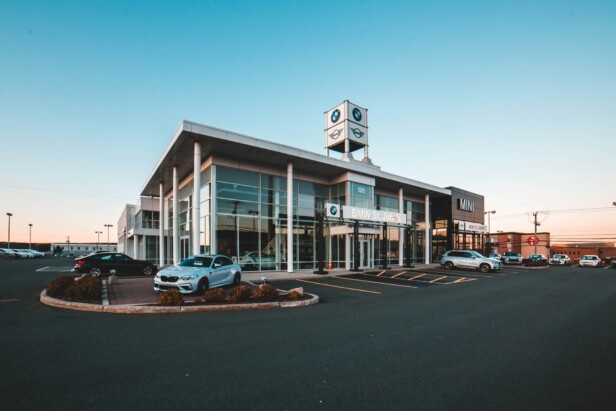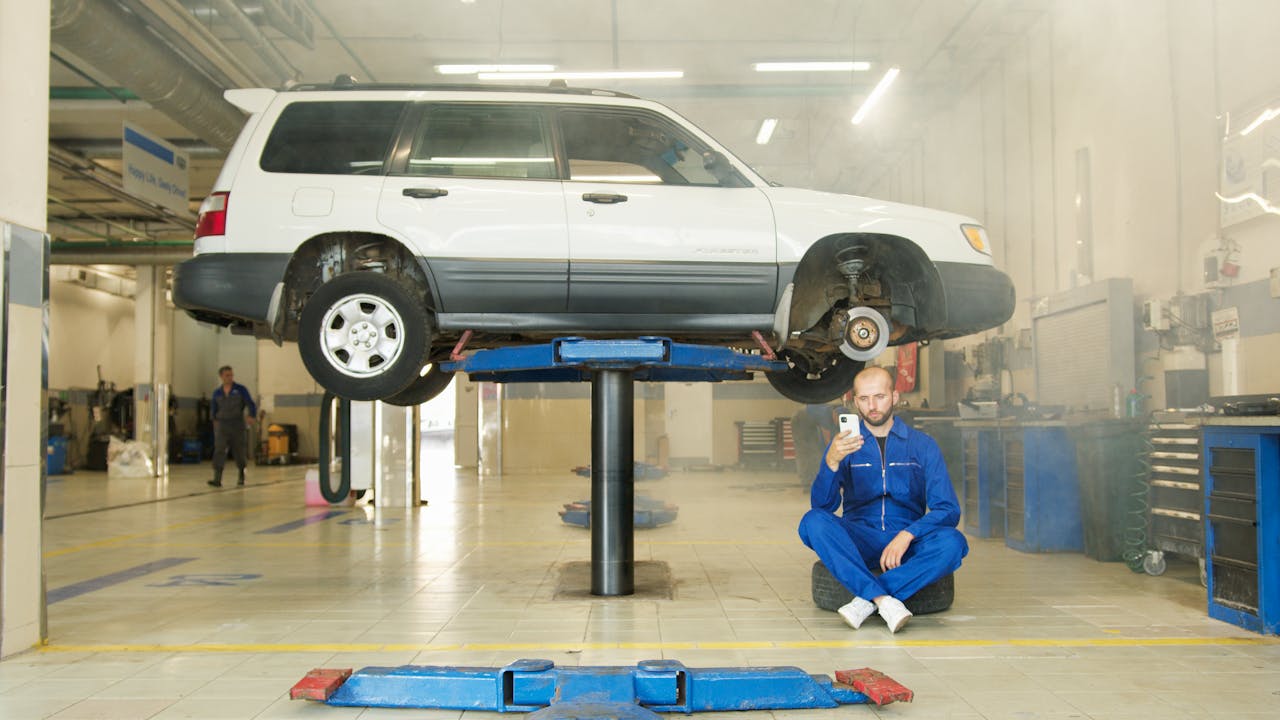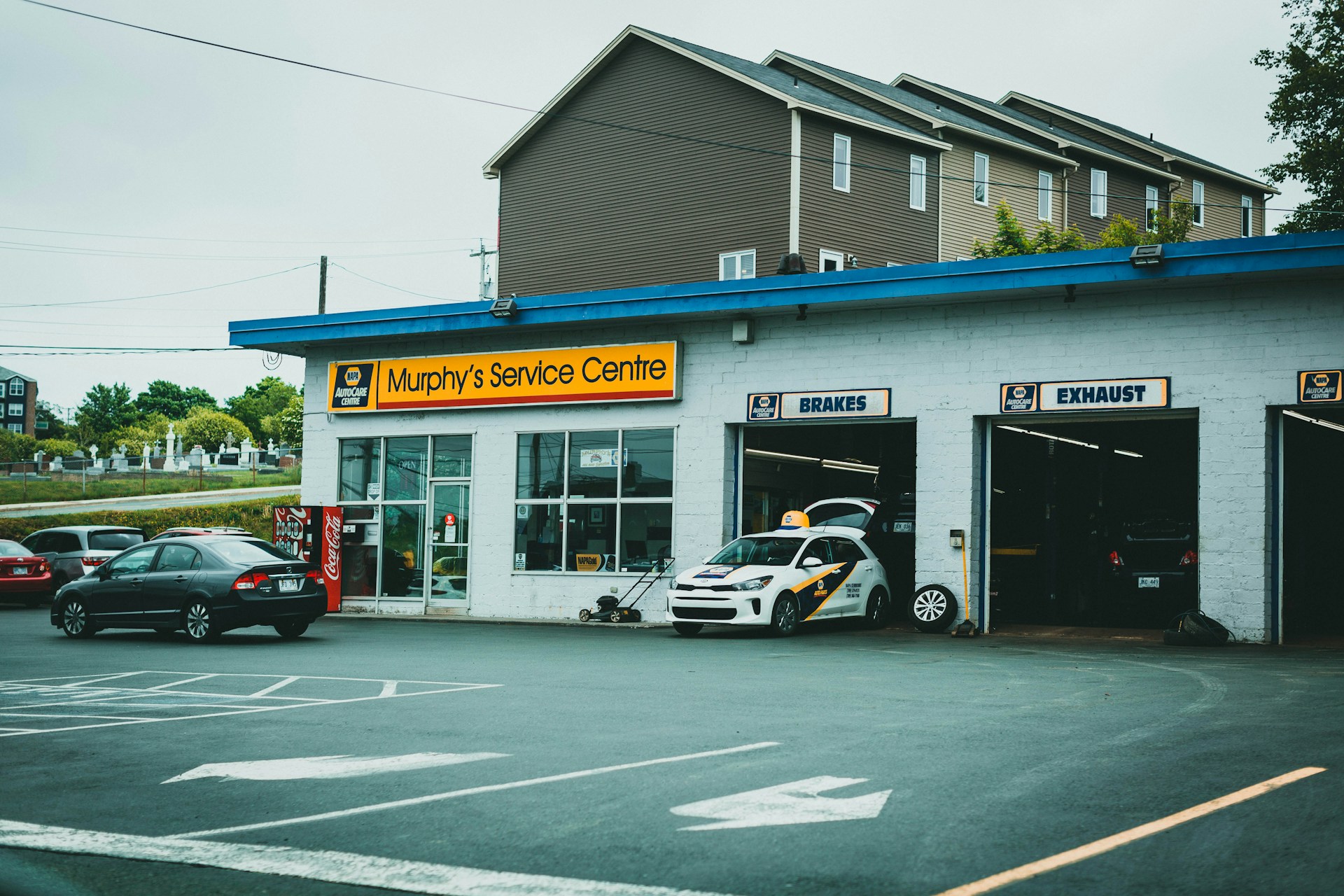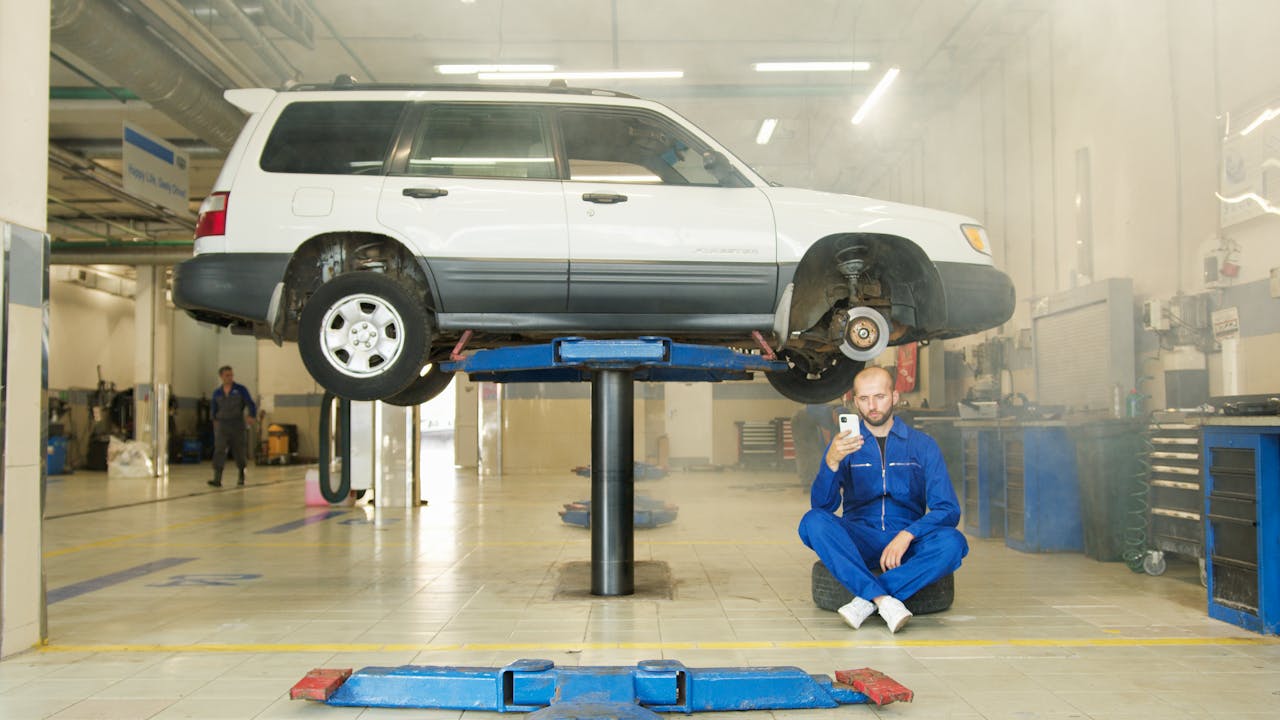Car dealership renovation costs in Dallas typically range from $50 to $250 per square foot, but scope decisions make the biggest difference. Most Dallas dealers focus on showroom flooring updates, LED lighting upgrades, customer lounge improvements, and service bay expansions that keep operations running.
Brand standards and image program requirements drive many cost decisions. Phased construction helps spread expenses across budget cycles while maintaining sales and service revenue during the work.
What Drives Car Dealership Renovation Cost In Dallas?

Scope defines the largest portion of renovation cost. Interior refreshes with new tile installation and LED lighting replacements represent common Dallas projects that range from moderate to extensive complexity. Service bay expansions demand structural modifications, utility relocations, and specialized equipment installations.
Brand standards control material selections, lighting specifications, and spatial layouts. Manufacturer image programs dictate specific finishes, colors, and architectural elements that exceed basic commercial requirements. These programs typically increase material costs by specifying premium flooring, specialized lighting systems, and custom signage solutions.
Technical Systems Drive Major Cost Components
Service bay mechanical systems represent significant cost drivers in Dallas renovations. Diagnostic power systems require dedicated electrical circuits and specialized outlets for modern equipment. Compressed air lines need properly sized distribution networks with moisture separation and pressure regulation.
Exhaust and chemical ventilation systems must meet both manufacturer standards and Dallas fire marshal requirements. These systems include overhead exhaust for vehicle emissions, chemical storage ventilation, and shop air quality management. We coordinate these installations with existing building systems to minimize disruption and ensure compliance.
Dallas Permitting Requirements Shape Design And Budget
Zoning compliance affects renovation scope when dealers modify building footprints or change occupancy classifications. Fire safety requirements include sprinkler system modifications, emergency egress upgrades, and ventilation system compliance. The Dallas fire marshal reviews technical system installations to verify code compliance.
Local ordinances sometimes conflict with manufacturer brand standards. Full-height glass facades may require variances for setback requirements. Exterior color specifications can conflict with historic district guidelines or neighborhood standards. These variance requests add time and fees to the permitting process.
Permit fees in Dallas follow established schedules but can accumulate quickly on complex projects. Commercial plan review fees start at $0.46 per square foot with minimum fees of $577 according to the Dallas permit fee schedule. Additional fees apply for fire protection plan review, electrical system modifications, and specialty system installations.
How Should Dallas Dealers Plan Budgets And Control Renovation Costs?
Phased construction allows dealerships to spread expenses across multiple budget cycles while maintaining operations. We sequence customer-facing areas like showrooms and lounges first, then transition to service and support spaces once front-of-house work completes. This approach protects revenue streams and gives dealers flexibility in managing cash flow.
Construction sequencing requires careful coordination between trades and operations teams. We schedule disruptive activities during low-traffic periods and maintain clear pathways for customers accessing parts and service. This strategic timing minimizes revenue disruption while keeping construction moving forward.
Value Engineering Delivers Brand Compliance At Lower Cost
Value engineering helps achieve manufacturer image program requirements without overspending on materials and finishes. We identify cost-effective alternatives that still meet brand standards, such as selecting alternate tile patterns or LED fixtures that provide required lighting levels at reduced cost. These substitutions preserve brand intent while controlling expenses.
The process involves analyzing each specification against function and appearance requirements. For example, high-traffic areas may require premium materials, while back-of-house spaces can use more economical options that still meet durability and code requirements. This targeted approach maximizes budget efficiency without compromising quality where it matters most.
Dallas Labor And Material Cost Planning
Local market dynamics shape renovation budgets in Dallas. Labor typically accounts for 50-60% of total remodel costs, while materials represent 40-50% of expenses. These percentages help us establish realistic budget frameworks and identify where cost control efforts will have the greatest impact.
We track both direct and indirect labor costs, including wages, benefits, and productivity factors specific to Dallas market conditions. Material costs fluctuate based on supply chain factors and local availability, so we coordinate early procurement for long-lead items to avoid price increases and delays.
Essential Budget Line Items And Fee Structure
Renovation budgets include standard construction categories beyond direct labor and materials. General conditions cover project management, temporary facilities, and site security. Overhead and profit represent contractor operational costs and reasonable margin. Architectural fees and engineering services support design development and code compliance.
We provide detailed cost reporting that breaks down these components so dealers understand where money goes. Design fees typically run 5-8% of construction cost, while general conditions and contractor fees vary based on project complexity and duration. Early permitting coordination prevents delays that can inflate these soft costs through extended schedules.
How Do Dallas Dealerships Stay Open During Construction—And What Does That Mean For Cost And Schedule?
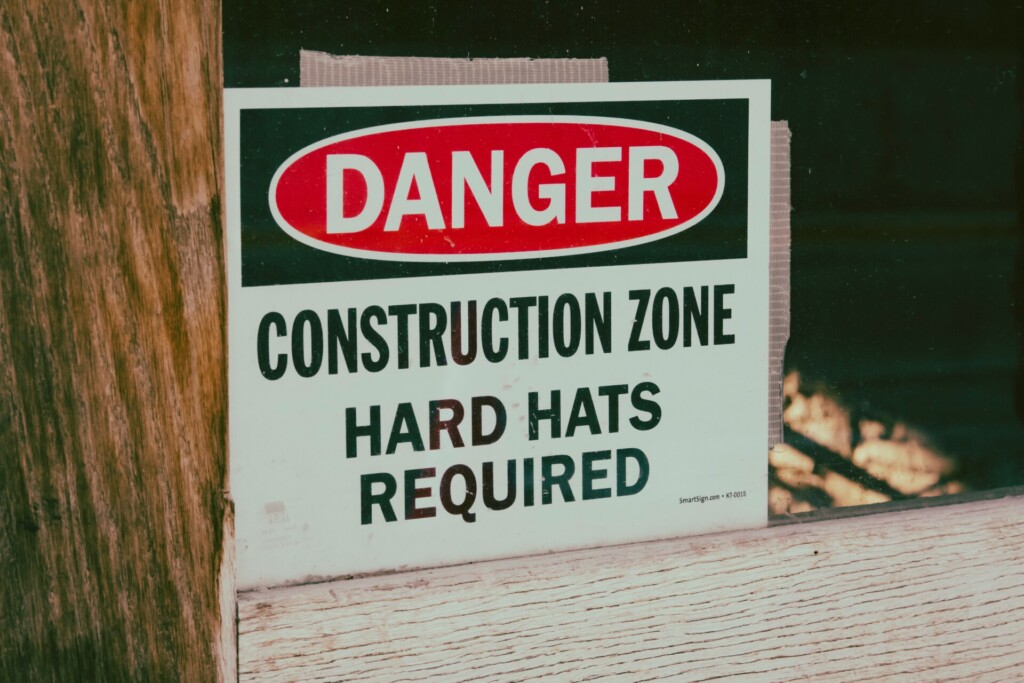
Revenue protection drives most operational continuity decisions during dealership renovations. We coordinate construction sequences to maintain customer access to sales floors, service bays, and parts departments while active work progresses in adjacent zones.
Showroom Partitions And Work Zone Separation
A 25-foot showroom partition creates the physical barrier needed to isolate construction activity from active sales operations. We position these temporary walls to maintain vehicle display areas while containing dust, noise, and debris within work zones. Heavy-duty plastic barriers provide flexible separation for smaller renovation scopes or when permanent partitions would disrupt critical traffic patterns.
Partition placement affects both construction efficiency and customer experience. Strategic positioning allows sales teams to maintain their primary display vehicles while giving construction crews clear access to renovation areas. We coordinate partition locations with dealership management to preserve high-value customer touchpoints and maintain natural traffic flow through operational spaces.
Scheduling Around Business Operations
Early morning and after-hours work scheduling protects peak sales periods from construction disruption. Disruptive activities like concrete cutting, heavy equipment operation, and material deliveries occur outside business hours when possible. This approach reduces noise control requirements while preserving the professional atmosphere customers expect during showroom visits.
Weekend and evening work adds labor costs but protects revenue during critical sales periods. We balance these premium labor rates against the revenue impact of closing sections of the showroom during peak hours. Most Dallas dealerships find that protecting Saturday sales activity justifies the additional scheduling costs for major renovation phases.
Customer Access And Site Safety
Clear pathways with proper signage maintain customer access to essential services throughout construction. We establish defined boundaries between work zones and operational areas using barricades and temporary signage systems. These measures ensure customers can reach parts counters, service advisors, and customer lounges safely while construction activity continues nearby.
Traffic flow management becomes critical when service bays remain operational during construction. We coordinate material deliveries and equipment movement to avoid conflicts with customer vehicles entering and leaving service areas. Safety protocols protect both customers and construction workers in shared spaces where renovation and business operations overlap.
Site safety measures include temporary lighting for after-hours work zones and secure storage for construction materials and tools. We maintain controlled access points that separate construction personnel from customer areas while providing emergency egress paths that meet local fire safety requirements during the renovation process.
Which Design Features And Brand Standards Shape Renovation Spend In Dallas?
Glass facades and floor-to-ceiling windows form the architectural backbone of modern dealership designs. These elements require structural reinforcement and specialized glazing systems that meet both brand visibility standards and Dallas wind load requirements. We coordinate with structural engineers to ensure the building frame can support large glass spans without compromising safety or energy efficiency.
Open floor plans maximize vehicle display space while creating unobstructed sightlines across the showroom. These layouts often require relocating or concealing existing columns, which adds complexity to the structural scope. The investment in open designs pays dividends in customer flow and inventory presentation, but requires careful planning to maintain building integrity.
LED lighting systems deliver the brightness levels that brand standards demand for vehicle display. High-output fixtures create dramatic lighting effects that highlight vehicle contours and finishes. We install dimming controls and zone switching to adjust lighting based on time of day and showroom activity. Energy-efficient LED systems also reduce long-term operating costs compared to traditional fluorescent or metal halide fixtures.
Tiled flooring provides the durability needed for heavy vehicle traffic while maintaining the polished appearance brands require. Porcelain tiles resist oil stains and tire marks better than other materials, reducing maintenance costs over time. We select tiles that meet slip resistance standards while reflecting enough light to enhance the overall brightness of the showroom space.
Customer lounges and reception areas feature upgraded finishes that reinforce brand positioning. Premium seating, custom millwork, and refined material selections create comfortable spaces for extended consultations. These areas often include built-in technology features like charging stations and interactive displays that support the sales process. The material selections in these zones typically represent the highest cost per square foot in the renovation.
Service bay layout drives both operational efficiency and customer perception. Quick lube stations require specialized drainage and equipment placement. Tire service areas need compressed air distribution and wheel balancing equipment. Diagnostic bays require power and data infrastructure for modern vehicle testing equipment. We design service areas with clear traffic patterns that separate customer and technician zones while maintaining visibility for quality assurance.
Wayfinding systems guide customers through complex dealership layouts without creating confusion. Digital displays can be updated for seasonal promotions or inventory changes. Static signage requires coordination with brand standards for fonts, colors, and placement guidelines. We integrate wayfinding into the architectural design rather than adding it as an afterthought.
Concrete display lots accommodate inventory fluctuations while meeting fire department access requirements. Proper drainage prevents standing water that could damage vehicles or create slip hazards. We coordinate lot striping and lighting to maximize display capacity while maintaining safe pedestrian and vehicle circulation. The exterior palette extends brand colors to parking areas, service drives, and building accents to create a cohesive visual experience from the street.
Conclusion And Next Steps For Dallas Dealership Renovations
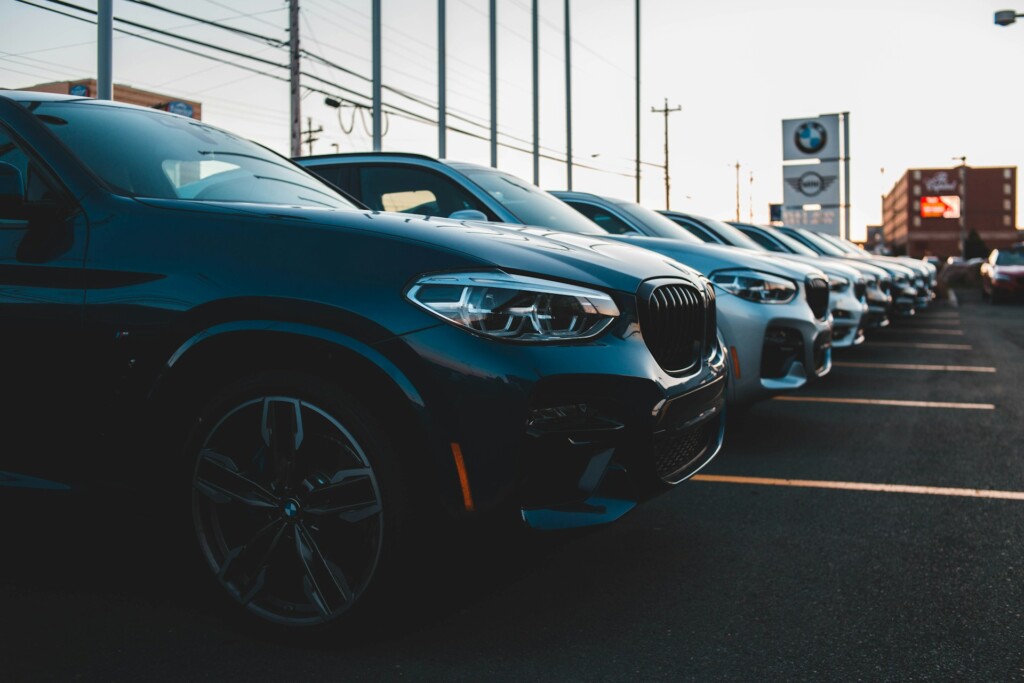
Dallas dealership renovation success depends on balancing multiple interconnected factors. Scope decisions drive the largest cost variations, from targeted showroom updates to comprehensive service bay expansions. Brand standards and image programs create baseline requirements that shape material selections and design approaches. Technical systems integration becomes critical in service areas where diagnostic equipment, compressed air, and ventilation systems must coordinate with both operational needs and code requirements.
Early planning prevents costly delays and design changes during construction. We coordinate Dallas permitting requirements with project schedules to avoid approval bottlenecks. Value engineering during preconstruction identifies cost-effective alternatives that maintain brand compliance while optimizing budget allocation. Phased construction sequencing keeps dealerships operational throughout renovation, protecting revenue streams while managing customer experience disruptions. These integrated approaches create realistic project frameworks that align expectations with actual market conditions.
Contact EB3 Construction to coordinate your Dallas dealership renovation project from permitting through completion.

